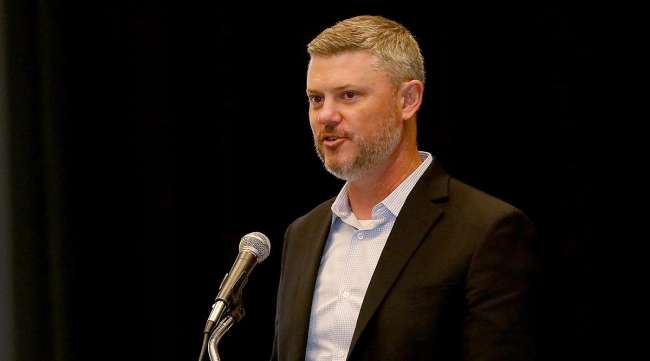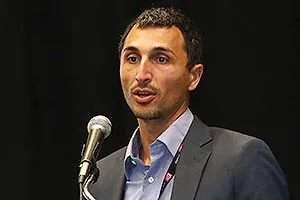Staff Reporter
Trucking Stakeholders Tackle EV Challenges

[Stay on top of transportation news: Get TTNews in your inbox.]
AUSTIN, Texas — The trucking industry has been moving steadily toward electric vehicles and renewable fuels, but challenges remain that must be overcome, experts said during a panel discussion.
“We’re fully committed to building a zero-emission, carbon-neutral future,” said Greg Treinen, vice president of on highway market development at Daimler Truck North America. “But, in the meantime, diesel is still our primary source of fuel and looking to continue. We’re not done delivering on improvements to our diesel technology as well as just trying to continue to make that as clean as possible where our customers operate.”
American Trucking Associations hosted the panel discussion as part of its 2023 Management Conference & Exhibition. The panel highlighted charging infrastructure development, operational costs and truck life cycle unknowns as the biggest EV challenges.
“Usually the early adopters are the ones that can afford to put charging behind the fence and afford to pay that price to operate more expensive assets,” said Salim Youssefzadeh, CEO of charging infrastructure developer WattEV. “For us, it comes down to how do we make it more economical for the owner-operators, and that comes down to, in many cases, total cost of ownership.”

Youssefzadeh by John Sommers II for Transport Topics
Central to that goal is getting price per mile as low as possible, or as close as possible to diesel, he said. He noted that the more the vehicle is operated, the lower its total cost of ownership will be. But he also stressed that various constraints must be considered.
“That comes down to working very closely with the shippers, getting the flexibility of maybe transitioning from a live load-on-load to more of a drop-and-hook, and [trying] to create a schedule where you can get more lanes per day and get more out of that asset,” Youssefzadeh said. “So, at least in our case, what we’ve noticed is that creating that schedule, matching the loads with the trucks and optimizing the performance of the trucks actually allows us to bring down the total cost of ownership to something that’s nearly on par with diesel.”

Gomes by John Sommers II for Transport Topics
“When we talk about total cost of ownership, there’s so many unknowns,” said Mike Gomes, vice president of maintenance at Bison Transport, which ranks No. 49 on the Transport Topics Top 100 list of the largest for-hire carriers in North America. “The purchase price of the vehicle is clear; it’s whether or not we supplement it with incentives, which are available both on the Canadian and U.S. side. But then the price comes into the afterlife of the vehicle. [With] our typical life cycles, we have to revisit everything. We look at and how we manage those vehicles today, and how we can make that work throughout the life of the vehicle.”
“The residual value journey is something that we’re still working on,” Treinen said. “This is a market that’s still in its infancy. [At] Daimler Truck, we have an aftermarket or used truck wing called Daimler Trucks Remarketing. So we’re still working with them, working with our large fleet customers — Bison will be one of those as well — trying to determine that.”
“It’s a bit more challenging as we try to understand the total cost,” Youssefzadeh added.
Want more news? Listen to today's daily briefing below or go here for more info:


